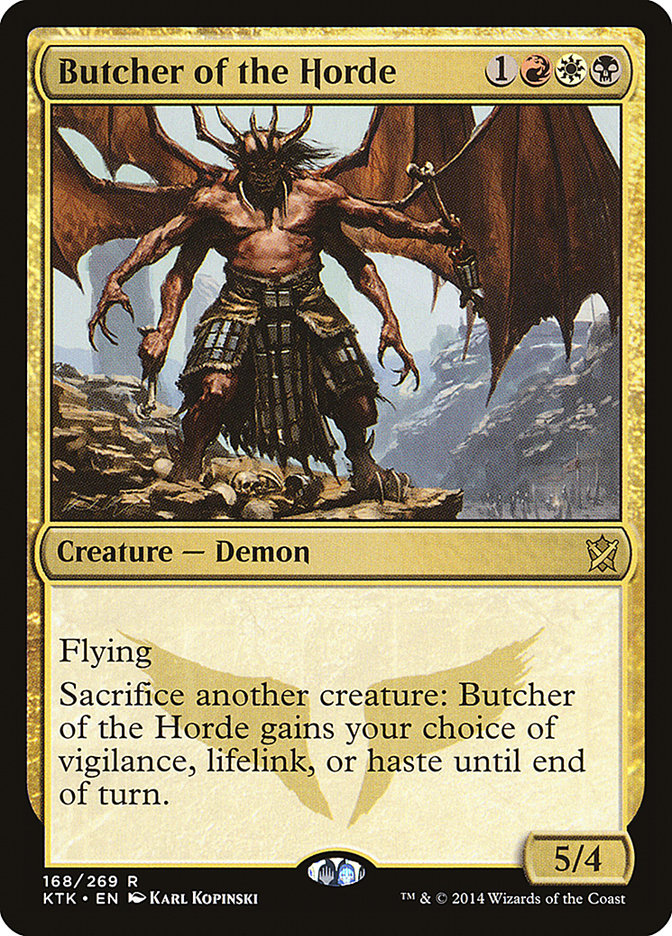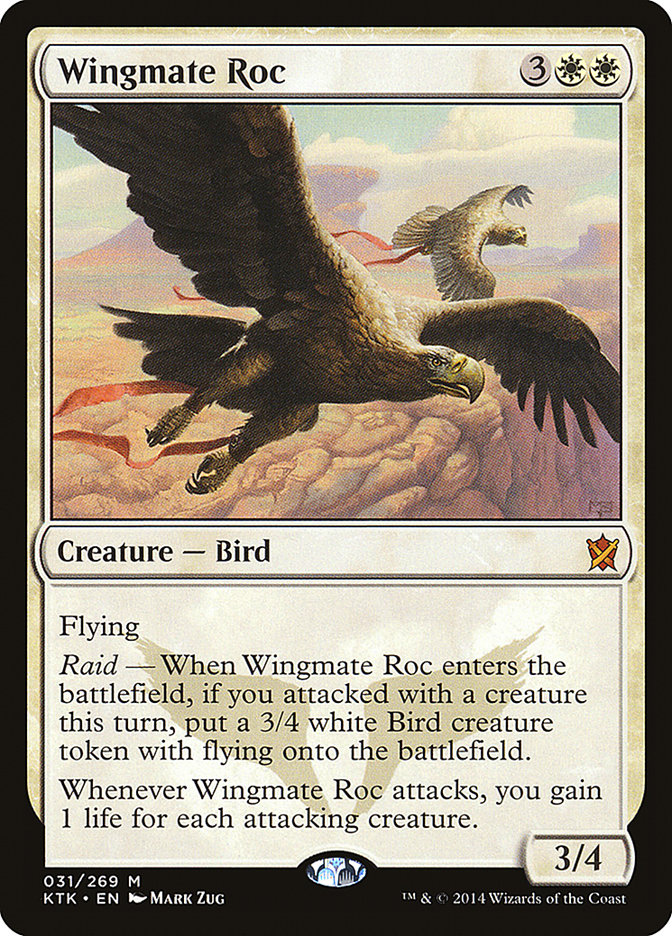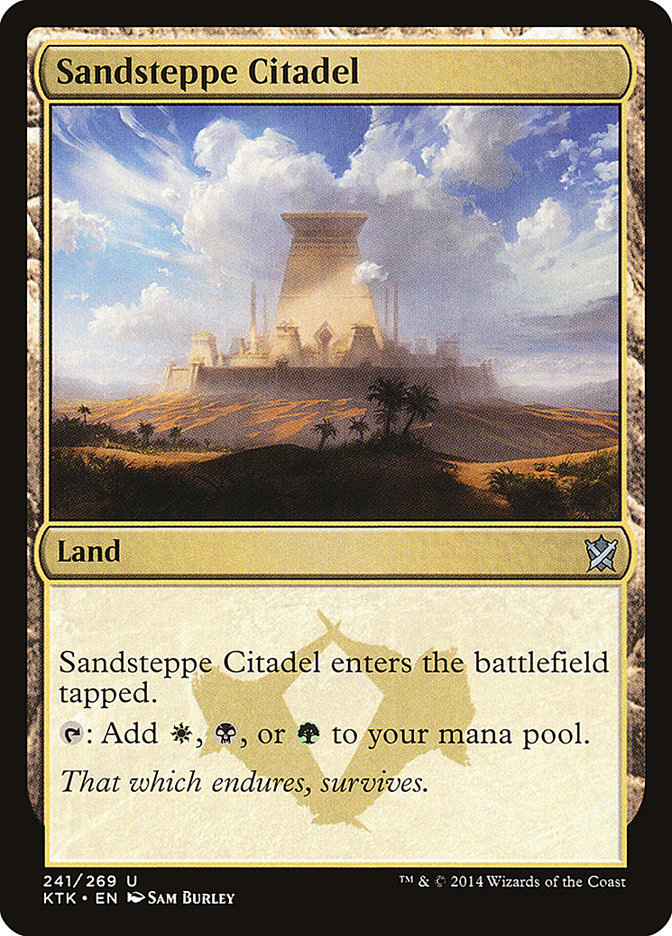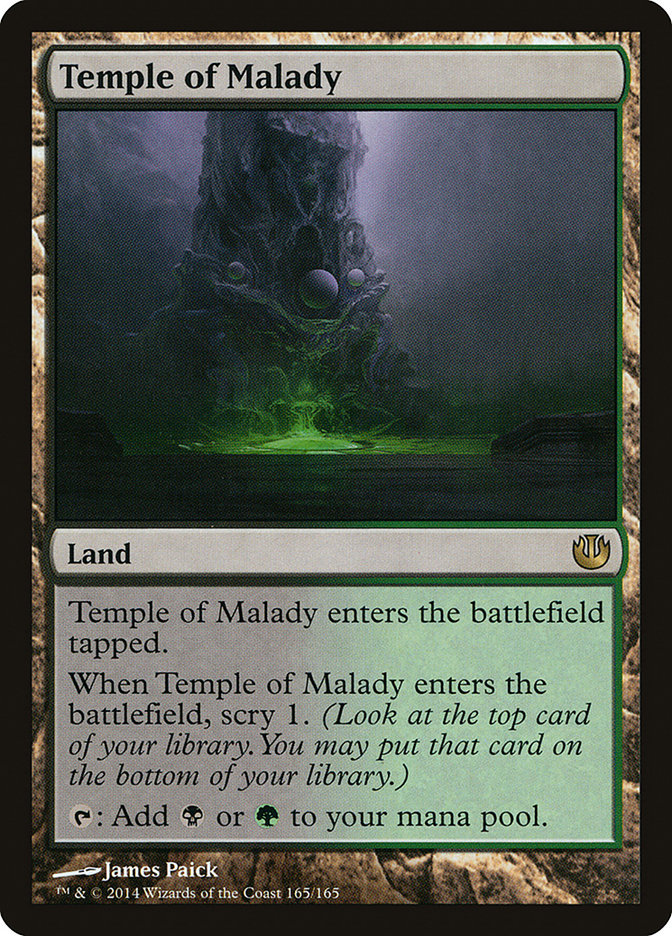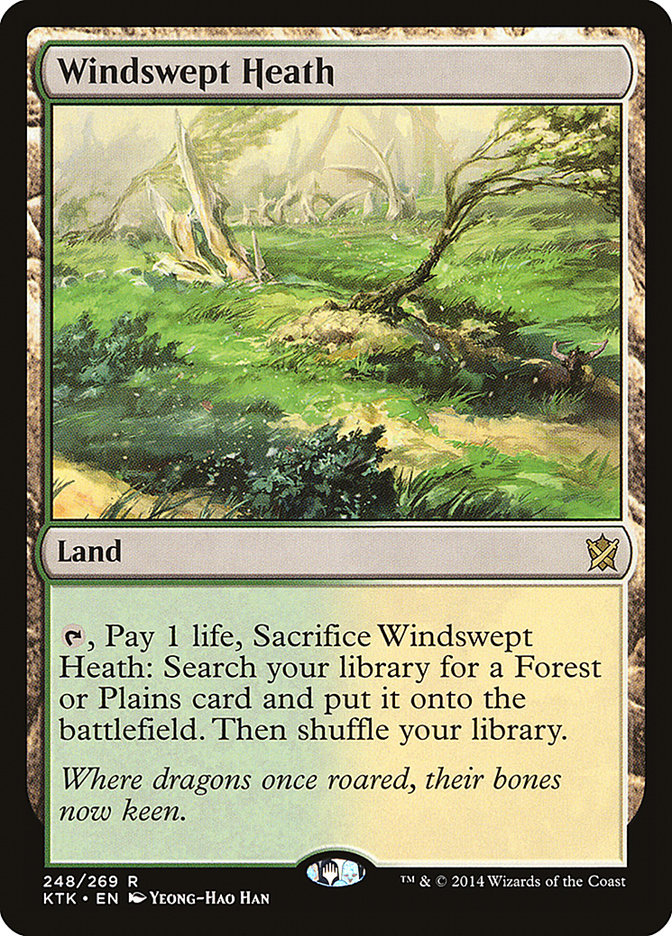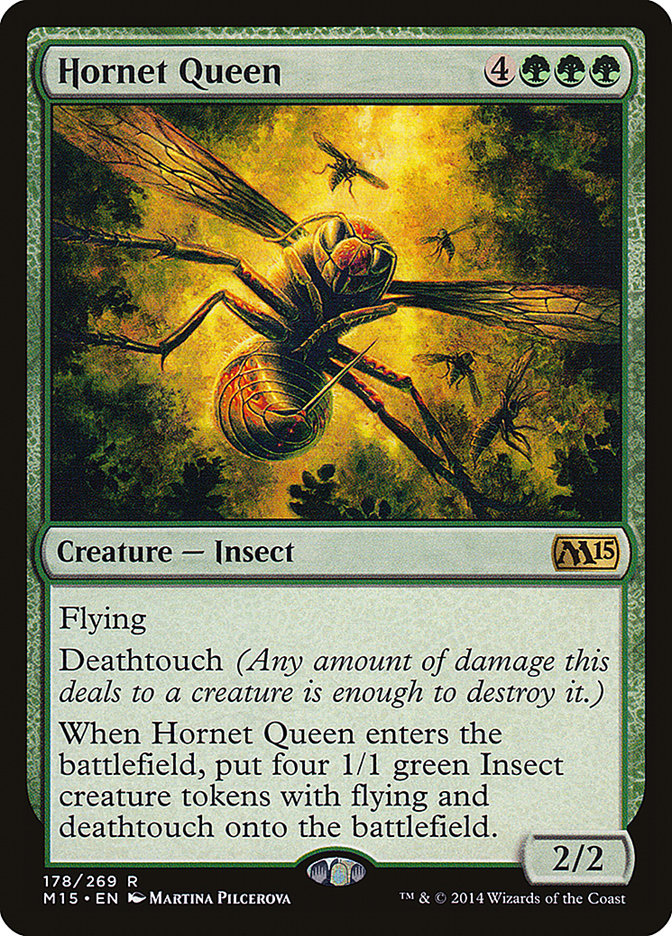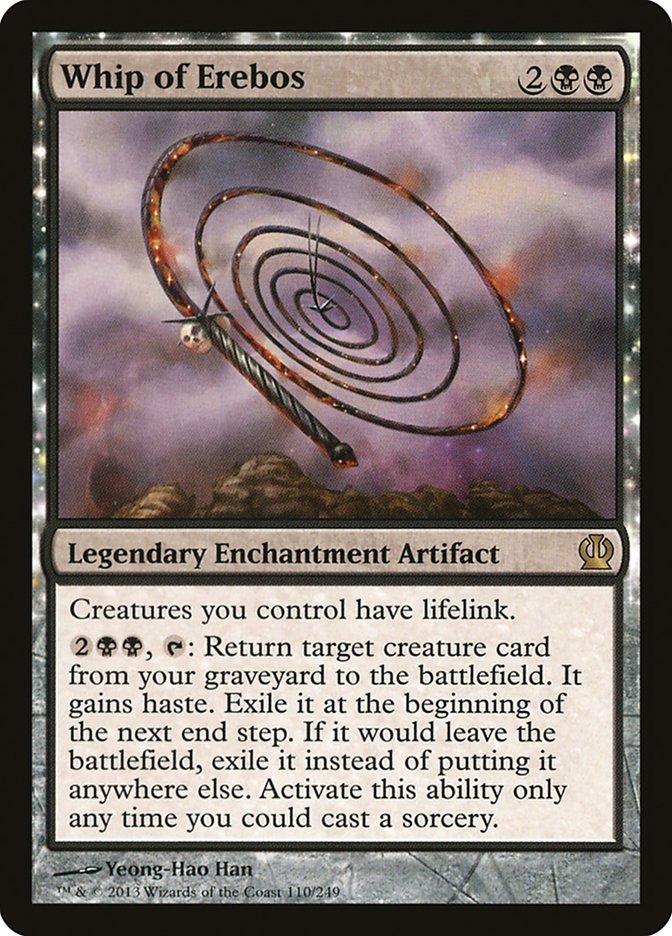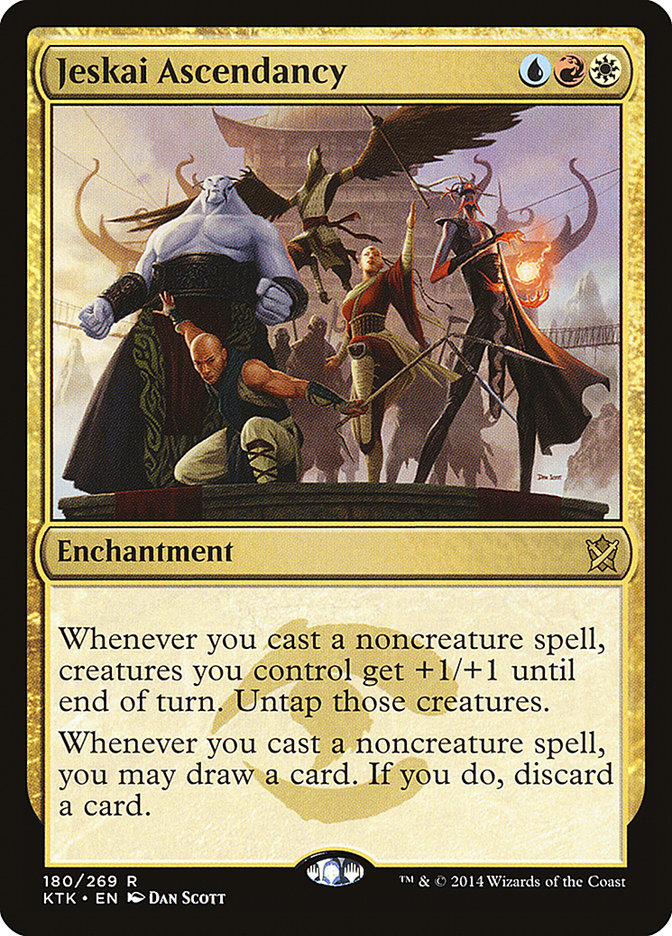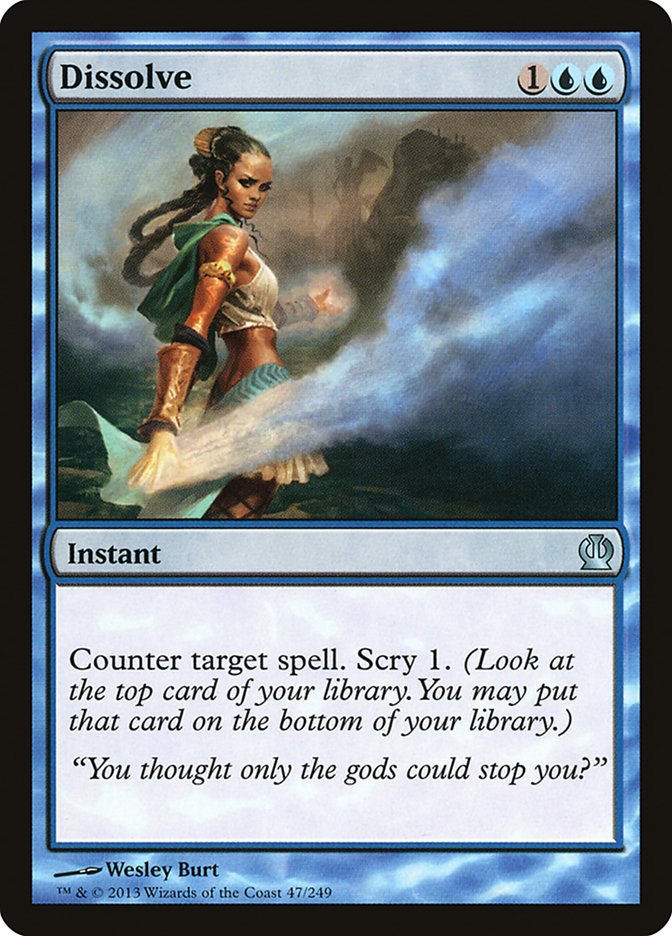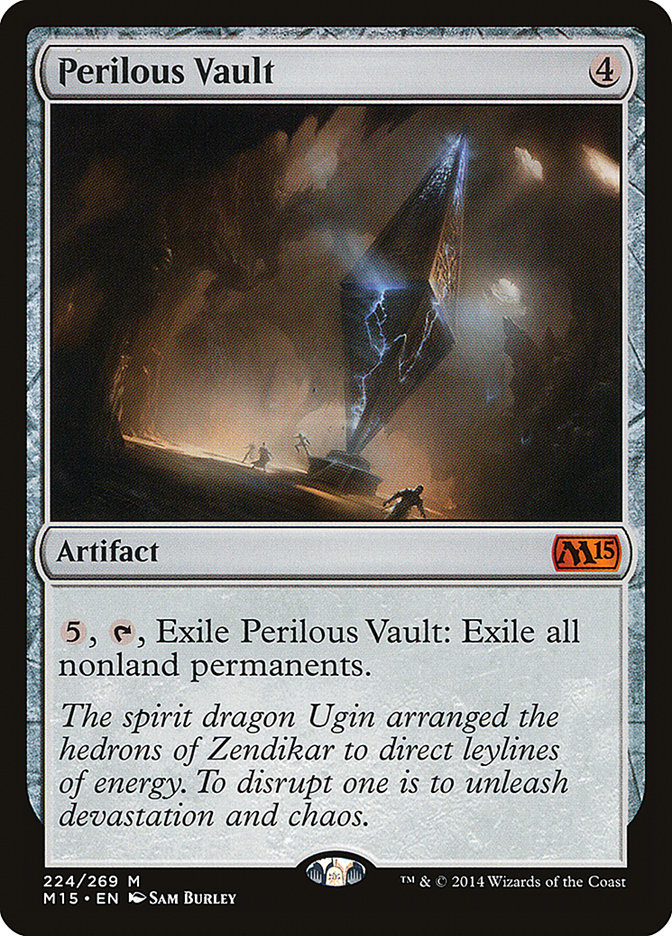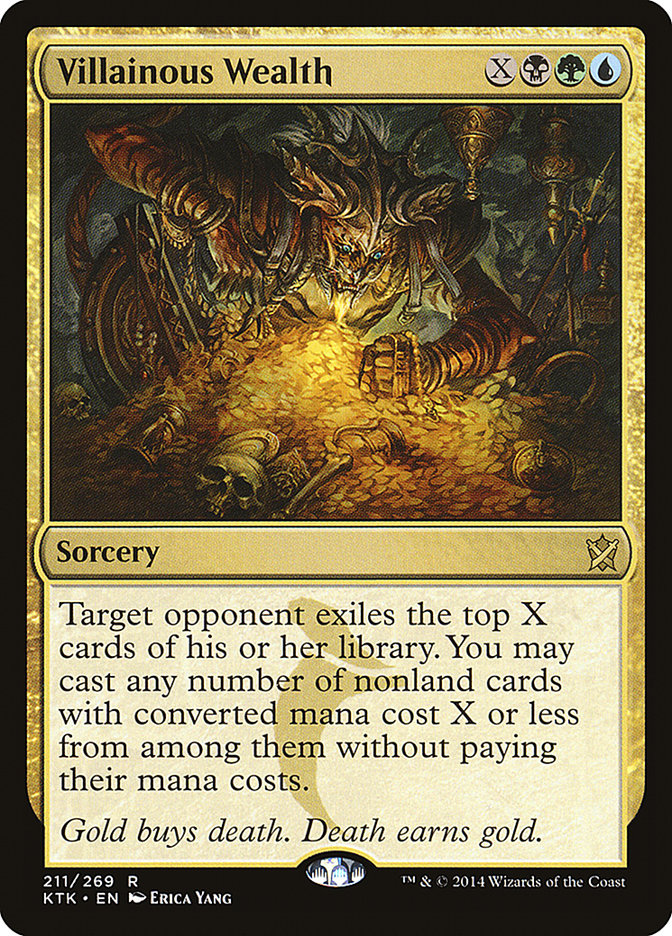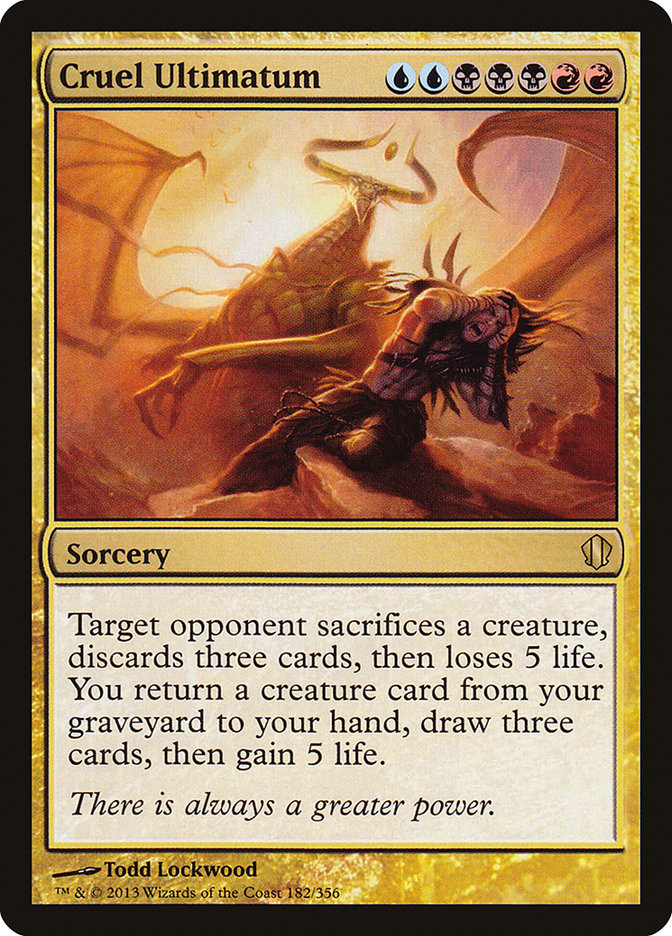We live in a world where the impossible has happened. It appears that in Standard, midrange is the straight away best strategy in the format!
Don’t believe me? Check out the Top 16 decklists from last week’s
Open Series in Atlanta
. More than two-thirds of the Top 16 decklists at last week’s Open (and all of the Top 4) is a pretty telling result.
For me, it is pretty surprising to see the midrange strategies dominate Standard at this level because, generally speaking, midrange tends to be the
weakest archetype a player can play (well, in a theoretical vacuum anyway…).
In today’s article I’m going to explain the opinion that I just stated, explain why I believe midrange has been able to break through as the best “deck
style” in Standard, and also point out some of the weaknesses deckbuilders might look to exploit to overcome the midrange menace.
Why is Midrange Typically Suboptimal?
In Magic there are four major deck strategies: combo, aggro, control, and midrange. Each of these strategies have a multiplicity of derivatives and
hybrids.
It is my belief that given an unknown format, typically speaking, midrange decks will tend to be the worst deck in most scenarios. Obviously, the current
iteration of Standard is not one of those moments in time, but in fact, a moment where the exact opposite is true.
There have been other moments in time where midrange has been the clear and away “best deck” as well. Remember this card:
The original Siege Rhino.
Let’s start at the beginning.
Midrange is an archetype where the deckbuilder is trying to position itself to line up his or her spells in such a way as to create profitable exchanges
and blocks against aggro decks but also have threats that generate virtual card advantage or real card advantage in order to continue to produce more
threats and/or answers in the mid to lategame.
My loose definition should seem pretty familiar here to anybody who has a working knowledge of the Standard midrange decks. They play creatures and removal
spells that line up well against the more aggressive and tempo decks and then they also have cards that generate card advantage or virtual card advantage.
Creatures (16)
Planeswalkers (6)
Lands (25)
Spells (13)
Sideboard

In the case of this deck from last week’s tournament, cards like Siege Rhino, Wingmate Roc, and Courser of Kruphix match up favorably against creatures
that would be trying to attack directly. As far as card advantage, Courser of Kruphix, Wingmate Roc, Abzan Charm, Elspeth, and Hornet Queen can all produce
card and/or permanent advantage (tokens), but the deck also generates a lot of virtual card advantage via its ability to gain a ton of life.
In a format where people are trying to win with Mono-Red and Jeskai Aggro decks, gaining life turns into a form of virtual card advantage. For instance, if
I play a Siege Rhino and gain three life, that lifegain essentially “counters” the next Stoke the Flames my opponent aims at me.
However, it is important to remember that all forms of virtual card advantage are not created equally…
Lifegain may be fantastic against an opponent who is aiming burn spells at your face, but it tends to be very mediocre against decks like Sultai Reanimator
or U/B Control that don’t really care so much about beating down and are simply trying to “go bigger” than the opponent. In these matchups, gaining 50 life
is only a mere annoyance, whereas against a burn deck 50+ life often times might as well be a billion.
As you can see, midrange has some great stuff going for it; lining up with an advantageous roster against beatdown decks seems great. Playing cards that
create card advantage or virtual card advantage seem good, and playing powerful threats seems good too. However, even in this brief explanation of the
archetype we are already starting to address some of the inherent weaknesses:
“What if there are multiple good types of decks I need to match up my reactive cards against?”
“What if the decks in the format are really diverse and attack from significantly different angles?”
“What if somebody is trying to go significantly bigger than me?”
“What if the types of ‘virtual’ card advantage I’m trying to create are not effective against a large portion of the metagame (ex. lifegain vs. control or
combo)?”
These are the basic dilemmas of playing midrange: how do you make sure that all of your cards are matching up well against an opponent’s spells and
gameplans?
I remember back in the day when Patrick Chapin lived in Michigan when LSV was in town back before LSV was that dominant hall of famer that he was now. We
were all playing cards at RIW, and Chapin and LSV were talking about generic getting better / improving at Magic stuff.
The basic advice that Chapin suggested to LSV on how he could improve and get to the next level was plain and simple: “Stop playing midrange ‘The Rock’
decks at Pro Tours.”
Lo-and-behold, the very next Pro Tour was PT Berlin and LSV won playing Combo Elves…
The key to understanding the point of midrange decks is that the concept behind the deck is to be fundamentally good against beatdown decks and then have
grindy / flexible tools to interact with non-beatdown decks, planeswalkers, Thoughtseizes, Removal, Card Advantage, etc.
The hope is that at the end of the day that The Rock decks have a bunch of 50% matchups against a wide array of the field and then the pilot can “play
better” than most of their opponents and achieve a high win percentage overall.
Why is Midrange the Best in Standard Right Now
So, if midrange is traditionally an archetype that hopes to create a bunch of 50-50 matchups, how can it be that the archetype is dominating the format?
Well, the answer is actually quite obvious; the deck doesn’t have a bunch of 50% matchups but actually has a bunch of 65% matchups!
Sometimes midrange IS the best.
Just like any other archetype when you give midrange decks the best or most powerful cards in the format, it is very easy for that strategy to be the best
deck.
Bloodbraid Elf is a great example of this phenomenon in action. The card is so insanely powerful that the difference between a Jund deck in Standard, or
even Modern, with or without the card is night and day. With BBE, Jund was easily the best deck in the format, and without the card the deck is
significantly worse.
Was the best card in Modern.
The same is true of Deathrite Shaman. While this pesky creature was legal in Modern it was straight away the best card legal in the entire format, and what
happens when a deck gets to play ‘the best card in the format”? Surprise! It is extremely good.
It isn’t that midrange can’t be good, it’s just that the archetype needs to literally have the best card(s) in the format in its maindeck in order
to actually be ahead of the curve.
In the case of both of these midrange all-stars, Bloodbraid Elf and Deathrite Shaman, we notice some pretty shocking similarities. They are both
undercosted and do multiple things that any midrange deck would want to do. They are flexible, powerful, generate direct or virtual card advantage, and can
be proactive or reactive depending upon the matchup or gamestate.
For example, Bloodbraid Elf is fantastic at attacking and fantastic at blocking depending upon what you need her to do. Deathrite Shaman is adept at
ramping, gaining life, and dealing damage depending upon what you need him to do.
The important thing here is that these are the kind of midrange cards that take the archetype from a coin flip deck to a dominant deck, because they allow
players to be proactive or reactive depending upon the matchup.
Are there any cards in Standard decks to which we can apply this concept?
When we look at every moment in time where The Rock decks have been truly at the top of the game we notice the same trend: The Rock decks have absolutely
OP cards. It goes all the way back to the days of Recurring Nightmare and holds true in Standard as we speak.
The reason that midrange is so good is that in Khans of Tarkir there is a mechanic where there is a cycle of uncommons, rares, and mythics where the
drawback is that these spells cost three different colors of mana, and the upside is that they are much, much, more powerful than most of the other spells
that exist in Standard.
For example, have you ever noticed how when you are playing a game of Sealed and your opponent casts a turn 3 Mantis Rider or a turn 4 Siege Rhino or
Butcher of the Horde and it feels like those cards are unbeatable because their stats to mana cost are so clearly much better than everything else? It’s because those cards stats to mana cost are so clearly much better than everything else.
The other important fact of distinction that plays into this equation is this important little nugget:
Infinite fixing.
I haven’t done any “Sphinx’s Riddles” since Return to Ravnica rotated out of Standard, but here’s a tough one:
If the drawback of a Siege Rhino is that it is hard to cast but there is more than enough fixing in the format to make the card easy to cast, what
happens?
The answer is that there exists a crazy OP card with basically no drawback.
Does that sound familiar?
In the current iteration of Standard there exists a moment where the mana-fixing is fantastic and people can play whatever they want, and there are a bunch
of cards that have amazing stats that require a bunch of different colors of mana to cast. So if the mana is available to cast these spells with relative
ease, why wouldn’t people just do that all the time?
Oh, wait that is exactly what is happening.
Having these three-color bombs floating around that completely outclass the mono- or two-colored threats simply creates a world where the aggressive or
two-colored decks can’t compete with the three-colored spells.
Hence, we live in a world where everybody is playing three-colored midrange decks because those are the combination of colors and archetypes where players
simply get to play with all of the best, most powerful, and most flexible cards in the format.
That is why midrange is the best in Standard, because it gets to play with the best cards, has no mana drawback, and has no natural predators.
How Can I Exploit a Midrange Metagame?
Now we know what makes a good midrange deck and why midrange is so good in Standard right now, but what can we possibly do to capitalize by knowing what we know?
The first option (which is incidentally the option that I most recommend at the moment) is to simply play a midrange deck that has a good matchup against
other midrange decks.
Creatures (27)
- 4 Hornet Queen
- 2 Elvish Mystic
- 4 Sylvan Caryatid
- 4 Courser of Kruphix
- 4 Satyr Wayfinder
- 3 Doomwake Giant
- 1 Pharika, God of Affliction
- 1 Soul of Innistrad
- 4 Sidisi, Brood Tyrant
Lands (23)
Spells (10)
Sideboard

The deck that ultimately won SCG Atlanta is a great example of a midrange deck that is nasty against other midrange decks.
Going bigger is better in a midrange mirror.
It’s very difficult for a traditional Abzan or Mardu Midrange deck to compete with an opponent who can gain a ton of life and simply produce a countless
number of deathtouch lifelink fliers.
A deck like this that lacks Siege Rhinos and Wingmate Rocs may be worse against more all-in aggro decks like Red or Jeskai, but it has a better matchup
against other midrange decks due to its ability to go bigger.
Another nice option might be to simply play Whip of Erebos and Hornet Queen in one’s Abzan Midrange deck in order to go a step bigger than other Abzan
players in the mirror.
The key to being good in a midrange mirror is to be doing something that is bigger than what your opponent can do. Interestingly enough, this is also the
same tactic that generic midrange decks use to beat generic aggro decks.
If an aggro deck tops out by playing three or four mana creatures, then it is very likely that a midrange deck is going to top out by playing four or five
mana creatures (Siege Rhino, Wingmate Roc). If the midrange decks are topping out with Wingmate Rocs and Elspeths, the mirror breaker is going to be Hornet
Queens.
The other option for beating a midrange metagame would be to play a combo or control deck.
Go off before they can plod their way to victory.
The combo route has put up some pretty good numbers despite not seeing a ton of play in Standard so for. People often forget that this deck has put up some
really strong finishes since Khans of Tarkir became legal for Standard play. Jeskai Combo Top 8’d the PT and won an SCG Open, just saying…
The other route that I think could be really good is to just continue to force playing control in Standard.
The downside to playing control is that it really struggles to beat the fast red decks because its spells are so slow and clunky, and it doesn’t have
blockers or Siege Rhinos like a midrange deck.
The upside?
Cards that slow plodding decks do not enjoy.
Counterspells and board sweepers are absolutely insane against decks that can’t do anything more than add expensive, slow threats to the board.
It’s sort of a trade off to play control, as you get to have a favorable matchup against all of the midrange but a hard one against all of the aggro. I
think I’d like to take this gamble at a high level event like an SCG Invitational or PT but probably wouldn’t want to take the plunge at an Open or Grand
Prix (where there is likely to be more aggressive decks).
When you tell your teammate to pick up a Jack in Euchre…
I believe that given the current card pool in Standard that Villianous Wealth is the biggest a player can go with regard to the power level of their
threat. Sure, it is really expensive to cast, but that has never stopped people from playing the best threats in a control deck before:
Worth the cost because it always wins.
If it gets to the point where everybody is playing Hornet Queens and Whip of Erebos, then this would be the next logical step. If you cast this spell for a
ton of mana it will A.) probably deck your opponent B.) cast between five and ten spells from their deck for free.
How does anybody beat a spell that casts ten spells?
Inquiring minds want to know.
The battle lines are drawn.
We all know the joke.
We’ve all seen the writing on the wall.
The cat is out of the bag.
Midrange is the best.
One of the great things about Magic is, for the most part, whatever is “the best” often times doesn’t stay “the best” for very long. Will this be one of
those moments where Abzan and Mardu continue to soak up Top 8 slots four or five at a time, or is it a moment where control, combo, and beatdown find a way
to surge back to the forefront of the metagame?
At least until Standard gets another set, it seems pretty clear that wedge-based midrange decks are going to be the key players in the Standard metagame.
The only question is whether you are signing up to play Siege Rhinos or fighting against the horned menace?



